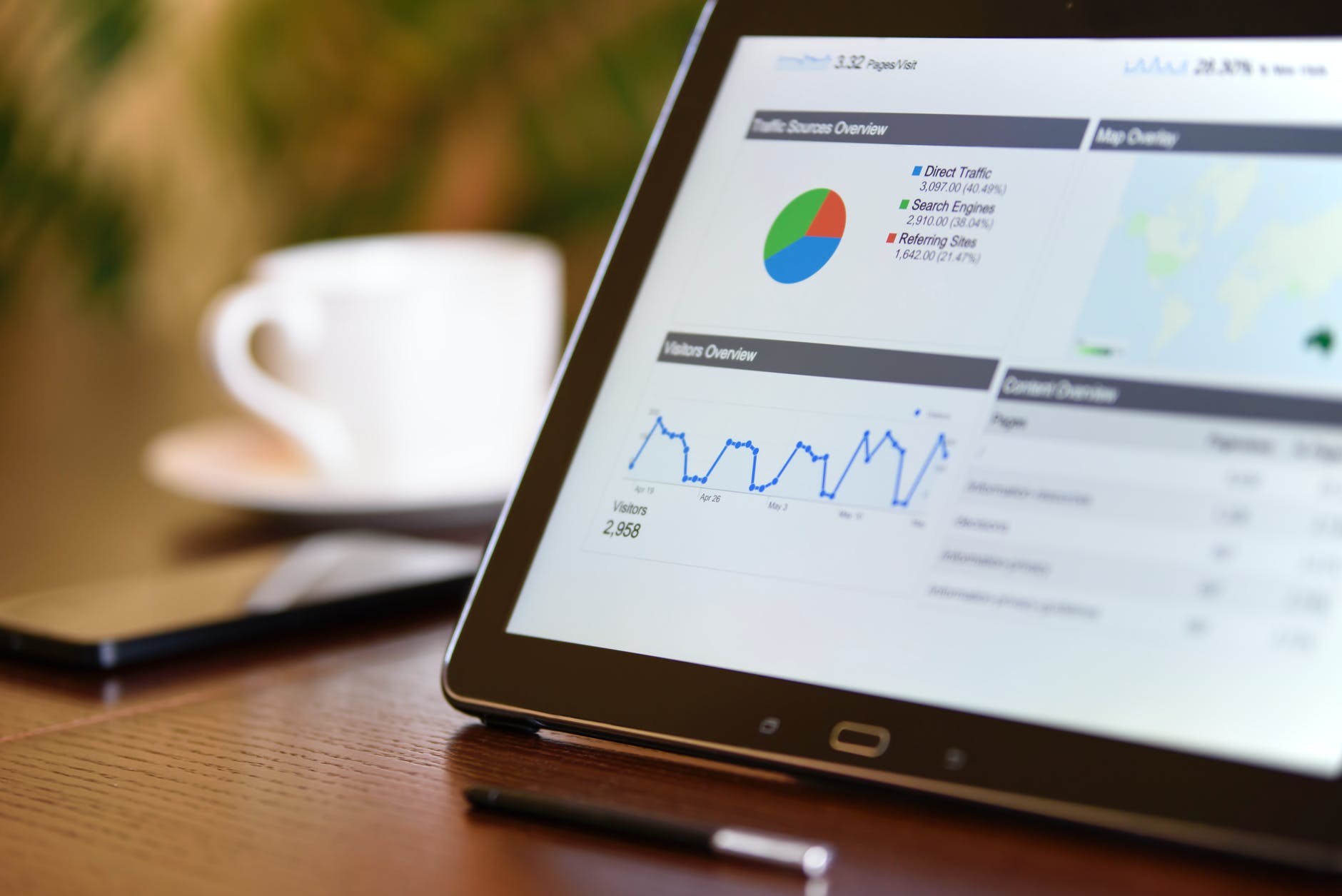Sending your data to our servers, please wait...





Oops... No results found.
Please try a different search phrase.
Digital Marketing 15 min read
The Marketing Metrics You Need To Be Measuring Right Now
Written by Dallin Porter
Marketing Director @ Galactic Fed
Expert reviewed by Dallin Porter
Marketing Director @ Galactic Fed
Published 05 Aug 2020
“What gets measured gets improved.” Peter Drucker. As a business, growth should always be at the top of mind. In the digital marketing world, it seems like everyday there is a new actionable metric that is the “most important,” and deciphering which ones are vanity and which ones lead to that ever-important growth. A whopping 94% of Cheif Marketing Officers believe that analytics directly help them achieve their goals, but when you compare that to only 15-20% of companies using tools like Google Analytics in the decision making process, it’s clear this is an under utilized process.
As self proclaimed growth-obsessed nerds, Galactic Fed is all about analyzing our and clients’ KPI’s, adapting, re-implementing, and seeing results. We echo Mr. Drucker in that you aren’t able to keep evolving if you’re not constantly measuring where you’re at on the road to your goals. We’re breaking down the most important marketing key performance indicators (KPIs) you need to be measuring, and more important, why they matter.
What are Your Objectives?
Before diving it, it’s imperative to note that the key to identifying the most important key performance indicators are the ones that zero in on what growth looks like for your business, and what your end goal is. For some, it’s increasing brand awareness, others it’s growing a following or subscriber count, or to generating more leads. Ideally, your goal would include some version of all three. Once you have these objectives solidified, revisit them often, to ensure your KPIs are leading to the destination in mind.
What Are Your Desired Outcomes?
When considering the outcomes from measuring the metrics that matter, one of the obvious ones is growth. But in addition to that, some outcomes are increased focus on your goals, for you and your team. Setting these goals and reviewing them often (even daily) allows you to see the progress you are making towards your goals, in real time. Deciding on these marketing KPIs will also help you with your overall marketing strategy, since your strategy should align with what the outcomes of your KPIs are. For example, if you’re focusing on blog opt-ins, you’re going to create an accompanying blog content strategy. Now let’s get into it - we’ve broken down these KPIs by marketing channel, depending on where your brands’ strategic focus lies, and providing some extra strategies for those seeking inspiration.
Social Media
When it comes to social media, you are in control. Because it’s made up entirely of all owned media, you can make improvements or adaptations based on the performance (or lack thereof) of these crucial metrics.
Reach: this refers to the unique viewers who could or have come across your content or social media. Here are some of the most important KPIs that can help you track your progress.

- Followers - we’re starting out with the simple, but highly effective. This KPI is the amount of people who have come across your social media channels and liked what you had enough to follow and interact with your brand.
- Impressions - this is how many times your content or post had shown up on your followers timeline or feed; basically how many opportunities there were to view what you shared. If you have a high impression but low engagement, this may be the time to edit.
- Traffic - the amount of times people come across your social media channels, videos, Facebook page etc.
Next step: If you’re looking to increase your reach, we suggest monitoring and testing the times you post and measuring how many people see it, and also conducting and optimizing your hashtag research.
Engagement: Different from reach, engagement refers to the interaction with your content (see below.) It’s also important because it indicates how well your content strategy aligns with what your users want to see.
- Clicks - every conversion begins with a click. This measures how many people saw your ad or post and wanted to learn more.
- Likes - although argued to be a vanity metric, the number of likes is an important metric to see how your followers respond to what you’re producing.
- Shares - a very valuable metric that directly relates to increasing your reach, since a single user sharing your content opens it up to everyone else in their network. Great content is content worth sharing.
- Comments - conversations about your brand are what drives brand identity. Any content strategy will keep a finger on the pulse of what people are saying about you.
- Mentions - these are the conversations people are starting on their own. Using a social media listening tool like Mention lets you extend the size of your brand ear, and is an effective way to receive feedback straight from the source.
Next step: Struggling with getting your audience to engage? Create a branded hashtag that they can use whenever they post something relevant to your brand, and, although it may seem too easy: be consistent with the content you publish.
Website
The KPIs to track for your website can be confusing, simply for the reason that there are so many. A brands’ website is often the control centre for all of your digital marketing content, and a hub for all of your other channels. Let’s take a look at what metrics will give you the best indication of performance.

- Page views: well, if people aren’t viewing your website, they most likely are not purchasing your product or service. This is a foundational metric to always be acutely aware of.
- Session time: the overall industry standard for session time is 2-3 minutes, and this KPI not only shows how engaged a user is with your content, but how easy to understand your page can be. Lower session time can mean people get confused, or may not immediately find what they are looking for.
- Bounce rate: in addition to the above, bounce rate will provide insight into your site navigation and how easy it is to understand. This refers to how many people leave your website after visiting only one page. This also provides valuable information in regards to your web copy, layout, and overall design.
- Unique visitors: this relates to the number of different visitors that come to your page, which is a great indication of how people are finding you, and how quickly you are growing.
- Email opt in: if you have an email opt in on your website, whether it’s to join a mailing list or sign up for a free trial, this is a golden nugget of information. A user giving you an email means they want to learn more, or take further action, and is a great sign they are moving along the marketing funnel.
- Content downloads: another way for you to tell that your delivering content that meets your audience’s needs is the rate in which they are downloading it from your site. Content that is low performing in this area needs to be edited, updated, or even deleted.
- Conversion rate: in its most simple form, conversion rate will let you know the percentage of people, viewers, or audience you change (see also, convert) from a prospective customer into a paying one. This is anything from a social media ad leading to a sale, to a drop email communication resulting in a client. This needs to be reviewed often, as the entire goal of any marketing strategy is to generate sales.
Next step: A solid way to improve page view per visitor is to create evergreen content that can live on your website for a long time, filled with high ranking keywords so your audience can find you. It’s also important to constantly review your user experience. Does your website flow naturally from one area to the next? Is it clear where to go to find certain types of information, like the Contact Us page? These small but highly impactful factors are why 39% of people will stop engaging with content when the images won’t load or the loading time takes too long, and that’s valuable prospects.
Blog
We know blogs can be tricky. For some, they provide amazing ROI without uSign up too much resources. On the other hand, it can seem like a constant battle to have your blogs viewed, shared, or interacted with. These are the best marketing KPIs to track for your blog:

- Number of blogs vs. last: a simple, effective metric to see if you are maintaining your own status quo, producing content and posts consistently. If you see a drop in users, take a look at how much fresh content has been created in the last month.
- Total blog views vs. last: extremely crucial to identifying successes and areas of opportunity for your blog. This is the amount of times your blog has been viewed overall, much like webpage traffic. We strongly recommend comparing them month over month to identify trends and progress, as these will provide clues into how your strategy is performing.
- Top blog posts by page views: this metric can and should directly affect your content marketing strategy because it quite literally shows you what your audience likes and wants to see. It also can be a great indicator of how people are finding your blog, via the keywords you use in your blogs.
- Top blog posts by click through rate: with this KPI, you can tell how people are finding your blog. Was it through social media, an ad, your website, or somewhere else? You can make adjustments to things like your ads copy or social media captions based on this metric.
- Traffic distribution/source: as with most of the blog KPIs, this can drive the direction of your content strategy. Knowing where the source of your blog traffic is will guide you along in knowing what types of content or blogs to produce. In the same vein, you can track if your users are using mobile devices over a desktop or vice versa.
Next step: You have the potential to skyrocket your blog viewership and subscribers by cross-platform publishing. Ensure when you create new content you’re using all of your available platforms, and tailoring the way you present it to each. This may be sharing long-form excerpts from the blog on Reddit, infographics on Facebook, or discussion points regarding the blog on LinkedIn. Then, follow up with commenting and engaging with those who like, comment, and share on these posts.
Email is one of the digital marketing channels that consistently provides the most return on investment. For every $1 spent on email marketing, you can expect an average return of $42. It’s safe to say then, that you need to be sure you’re measuring the right key performance indicators to see that massive ROI.

- Clickthrough Rate: your CTR as it pertains to your email marketing is in direct correlation to how well your email campaigns perform. It will measure how many people click through to the links in your emails, such as viewing a blog post or redeeming a coupon code.
- Conversion Rate: simply put, your email conversion rate quite literally means business. It’s the percentage of users that took the required action. Like we mentioned in the beginning, it’s imperative that you know what the conversion you want your reader to take is, otherwise, this information is just a percentage.
- List Growth Rate: every brand with an email marketing list has the goal of growing that list. More emails means more eyes and more opportunities for growth. This also is best to be compared month over month to track the increase (or decrease) of the rate in which your email audience is growing.
- Email Sharing/Forwarding Rate: chain mails may be dead, but companies still want their emails being forwarded to other viewers. This statistic also guides what type of content works best in your email, because people only share information they found valuable.
- Open Rate: you can put a lot of effort into crafting the perfect email marketing strategy, but if it’s not being open or read, the results will not follow. This is a KPI that can guide your A/B testing using different email subject lines to see which perform the best.
- Unsubscribe Rate: Definitely the metric that you want to see a lower number, a decent unsubscribe rate should hover around the 0.5% mark. If you send out a marketing campaign and this figure increases drastically, you’ll want to revise your content.
Next step: Struggling to get people to engage with your emails? Some high-impact overlooked tactics include positioning your social media channels in an obvious place on the email, with the CTA to follow. Another strategy would be to personalize your email subject lines with first names, a nice touch that can be done easily with email marketing automation tools like Mailchimp or Mailjet.
In the age of conversion rates, retweets, and follower counts, identifying the most important metrics for growth can seem daunting. As experienced data-crunching, KPI-analyzing, growth scientists, we have tried and tested which key performance indicators do just that: indicate where your business is and what strategies need to be implemented. If you consistently measure your KPIs against your objectives and outcomes, this will ensure your actions and decisions are aligned, and you can be confident that these marketing metrics will lead to big time growth.

Dallin Porter
Marketing Director @ Galactic Fed



